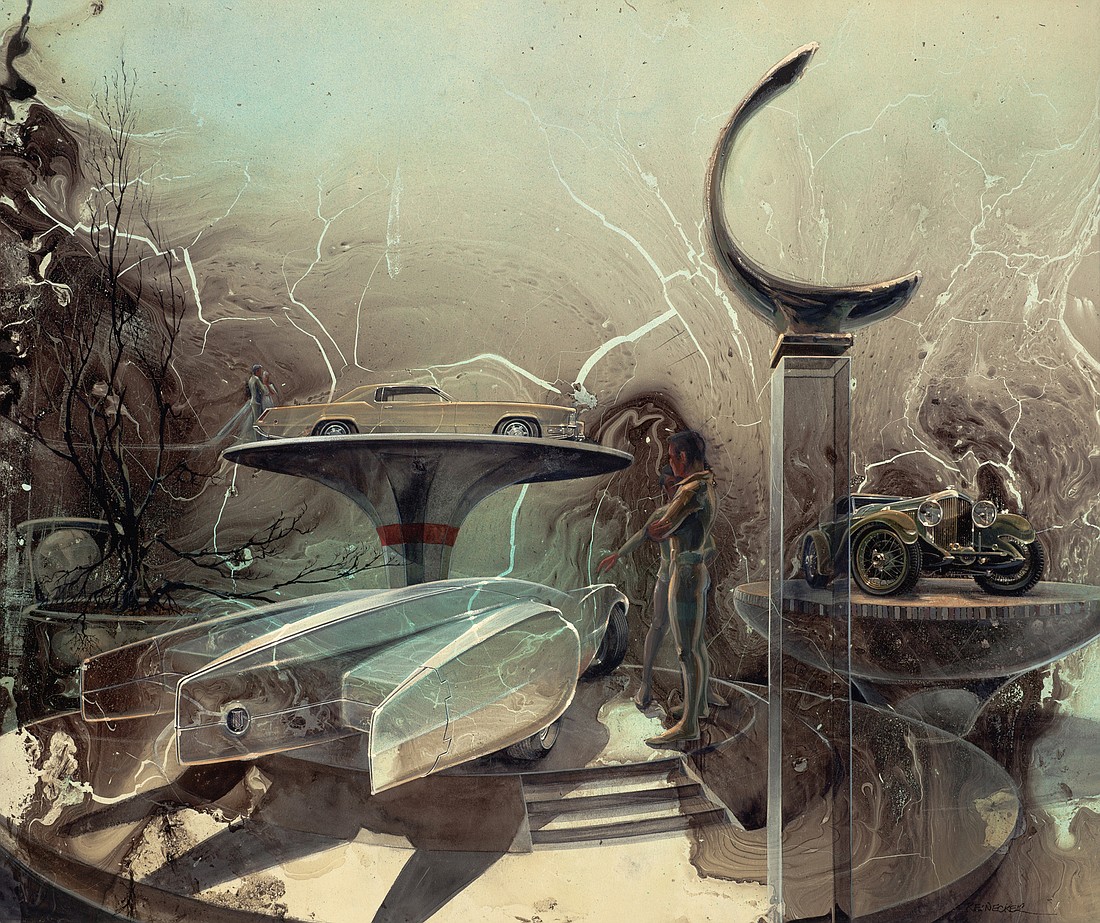- November 23, 2024
-
-
Loading

Loading

Art and design don’t have to be mutually exclusive.
Even the most routine product designs for a major corporation can be artistic, and that’s one of the major takeaways from the newest exhibit at Ringling College of Art and Design, Warren Reinecker: General Motors Automotive designer.
Warren Reinecker, who died in 2008, began his career as a junior designer at General Motors at a pivotal period in vehicle design. The year was 1964, and NASA was making history with every new vehicle it launched into space. That year marked the first American Gemini flight, the first Apollo Command Module orbit and the first flight in the Lunar Landing Research Vehicle.
Mark Ormond, the Ringling College curator for the exhibit, believes Reinecker’s designs were influenced by such NASA creations.
Ormond notes that much of what is found in the exhibit, which runs through Dec. 8 at the Lois & David Stulberg Gallery, is futuristic vehicle designs that often resemble aerodynamic spaceships. Many, however, also have emblems and other design elements that are found in cars today, which shows how forward-thinking Reinecker was.
Students can learn a great deal from this mindset, he says.
“As in any work of art that you’re going to put into production, you have to really think out of the box, you have to have a dream, a fantasy about what a car can look like or be and how it can function,” he says.
Ormond says it’s important for companies like GM to have designers like Reinecker because imaginative designers determine what future products will look like. When designers are as detailed and committed to excellence as Reinecker was, that work crosses the line from design into art.
“I think at the conceptual stage, these are works of art,” he says. “They start off as abstract forms and they have to adhere to a certain composition, have to weigh properly and so forth.”
Design Archive and Special Collections Manager Susan Skarsgard is the GM representative who collaborated with Ormond to get the exhibit to Ringling College. She sat next to Reinecker in the GM design lab for 12 years, and she knew he maintained an archive of his own work because she helped him pack it when he left the company.
Skarsgard helped start the GM Design Archive eight years ago, and she knew from the start that Reinecker’s work would be an important addition to the collection because of his excellent craftsmanship.
“It’s an incredible work of art,” she says of his personal collection as a whole. “His rendering skill is so profound and so beautifully articulated and that’s where the art comes in. It’s one thing to come up with an idea as a designer, but it’s another thing to render it to such perspective that it’s like it’s sitting there on the page.”
This is the third time this collection has been on display outside of the General Motors Design Archive & Special Collections, and Skarsgard thinks Florida is a great place for it because of the number of Michigan expats who live here and either worked at GM or lived near its Detroit headquarters.
The exhibit shows everything from Reinecker’s work as a student at Art Center College of Design to his work at the special studio in GM where he spent most of his career designing the emblems and name plates that most car consumers don’t think twice about, Skarsgard says.
Everything in the exhibit was done by hand, which is rare for vehicle design today. Some designers begin by sketching their drafts, Skarsgard says, but the main vehicle design process is now done using all digital tools.
This gives both design students and the general public a unique look into a world that most people outside of the field are completely unfamiliar with, she says.
“This material is the kind of thing that never gets seen,” Skarsgard says. “It’s kind of an insider’s view into a very narrow little slit into a department that is part of the industrial design organization at GM.”
She says she’s happy to provide this peek into the design process at GM because she wants people to walk away with a newfound understanding of everything that goes into creating a car.
Skarsgard is excited for viewers to see not only finished designs, but the renderings that Reinecker produced as early drafts. She says it shows the whole design process rather than vinyl renderings of the polished concept. This way viewers can get a look at how a designer thinks.
“I don’t think the public has any idea the level of talent and expertise that goes into vehicle design, she says. “It’s a really wonderful thing — especially for young people and design students to see how things were done in the past and to get a better understanding of what industrial design is.”
But to Skarsgard, this exhibit means even more. It’s a way for her to remember and recognize her late colleague and mentor who had a significant impact on her design career.
“He was a very wonderful person and very generous with his time and his expertise,” she says. “It was very wonderful to honor him in this way. I think he would have just been incredibly grateful for that.”